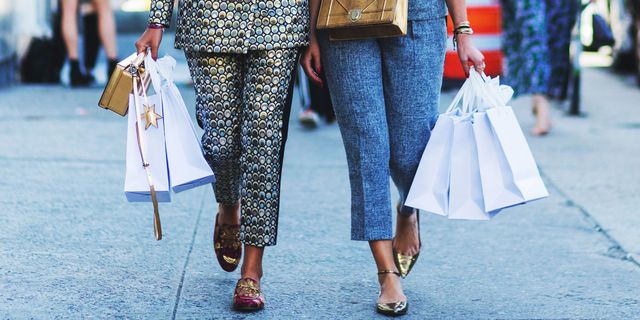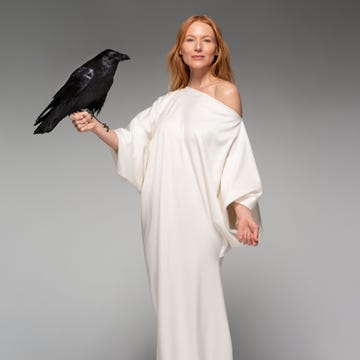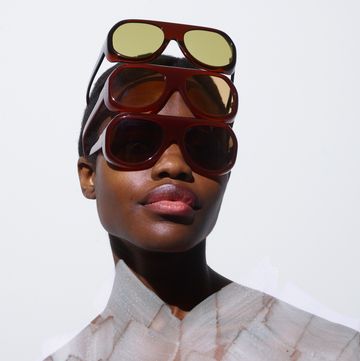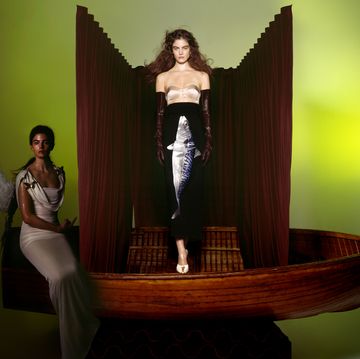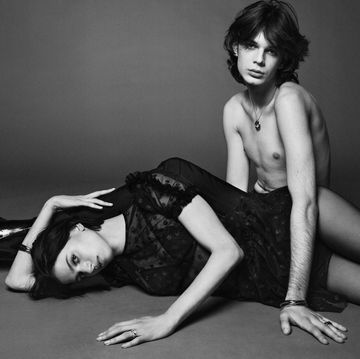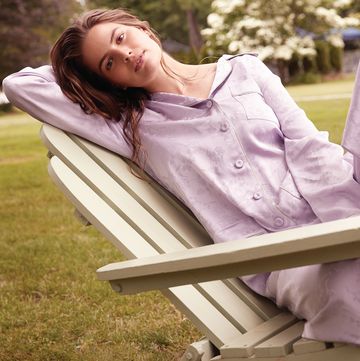By now the notion of "retail therapy" has become a modern cliché. And yet it's the rare popular idea that is actually backed by scientific evidence.
As usual, the brain chemical to credit or blame for our pleasure—in this case, the pleasure of shopping—is dopamine. The neurotransmitter surges when you're considering buying something new—anticipating a reward, in other words. Sales, by the way, give us an even harder kick. "We're constantly comparing what we expect with what we actually perceive," says Columbia University professor of neurobiology David Sulzer. So when an unforeseen benefit enters our cognitive field—30 percent off!—the dopamine really spikes.
The biological point isn't to land you in debtor's prison; dopamine encourages exploration by rewarding us when we stumble upon something salutary. This chemical response is commonly called "shopper's high," Sulzer says, likening it to the rush that can come with drinking or gambling.
Interestingly, your brain calculates how buying an object of desire will feel before you consciously consider whether to purchase it. Uma Karmarkar, a neuroscientist and assistant professor at Harvard Business School, gives this example: Perhaps you've set a strict budget for yourself after New Year's, but then you encounter something delectable and zap— your neurological flares go off, best-laid plans be damned.
While you can't see inside your own brain as you ponder a $900 leather jacket, researchers like Karmarkar can. In an illuminating 2007 study, neuroscientists scanned people's brains as they considered a range of products and noted, first, that a region called the nucleus accumbens—aka, the pleasure center—showed more activity. That's to be expected, but here's where things get interesting. When the study volunteers were given prices for the items, the part of their prefrontal cortex associated with executive functioning, particularly decision-making, lit up, as did the insula, an area implicated in processing pain. And subjects with the busiest insulas were most likely to decide against the purchase. It's a nerdy way to think about something you know intuitively: There are times when the pain of parting with your hard-earned cash outweighs the pleasure of new stuff. Put another way, spending really can hurt.
For some people, though, the immediate gratification of shopping always seems to outweigh the reckoning of suffering. A new area of psychological research focuses on shopping addiction, a surprisingly controversial concept, according to UCLA neuropsychologist Robert Bilder, PhD. Not so long ago, excessive shopping was understood to be a compulsion; now experts like Bilder argue that it's an addiction. To call something an addiction suggests that "developing a tolerance" for it is possible, Bilder says—that "it requires a larger dose to get the same effect. You find yourself needing more and more."
The culprit, according to other brain-imaging studies, such as a 2010 report in Science, may be faulty dopamine receptors: Those who tend toward impulsivity experience a bigger release of the neurotransmitter than the rest of us, which leads them to crave another hit.
So how to break an addictive cycle? In a 2015 survey of 23,537 adults published in Frontiers in Psychology, Bilder and his colleagues found that those who met the criteria for shopping addiction were also more likely to have symptoms of depression or anxiety. To that end, he recommends cognitive behavioral therapy, talk therapy, or perhaps antidepressants (though they haven't yet been proven effective for shopping addiction).
Of course, not every shopper is a junkie. The key is, know thyself. A 2014 study in Applied Research in Quality of Life that summarized the research on happiness and consumerism noted, for example: "Luxury consumption positively affects an individual's subjective well-being." Still, guess what science says will make you even happier? Giving your money away.
This article originally appeared in the January 2017 issue of ELLE.
